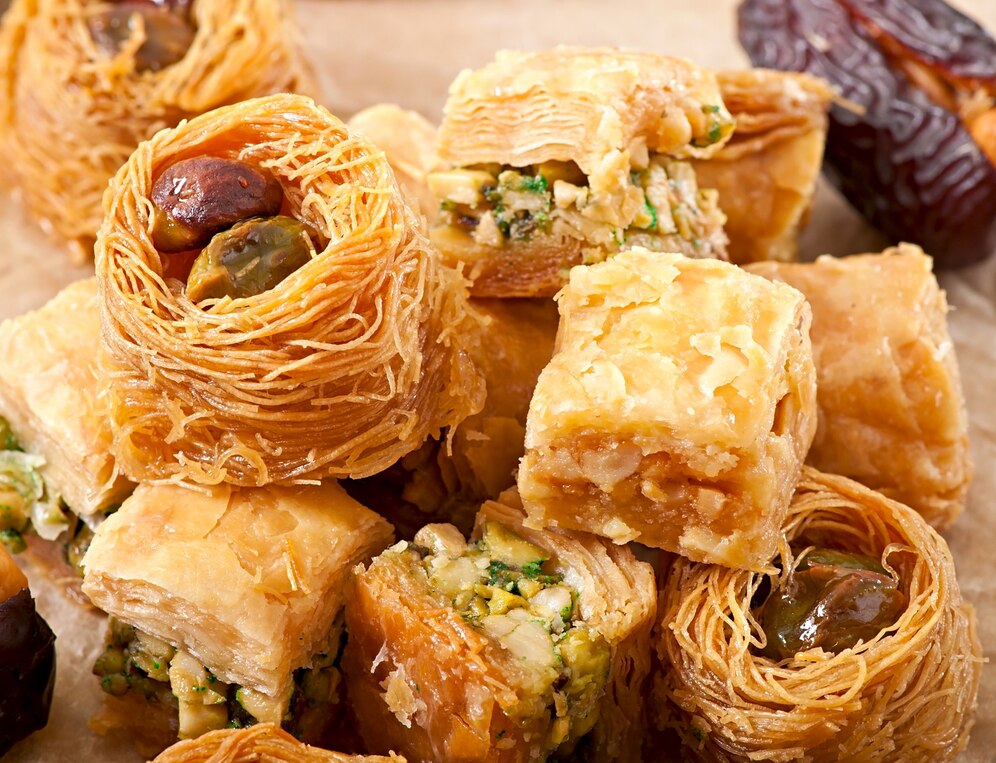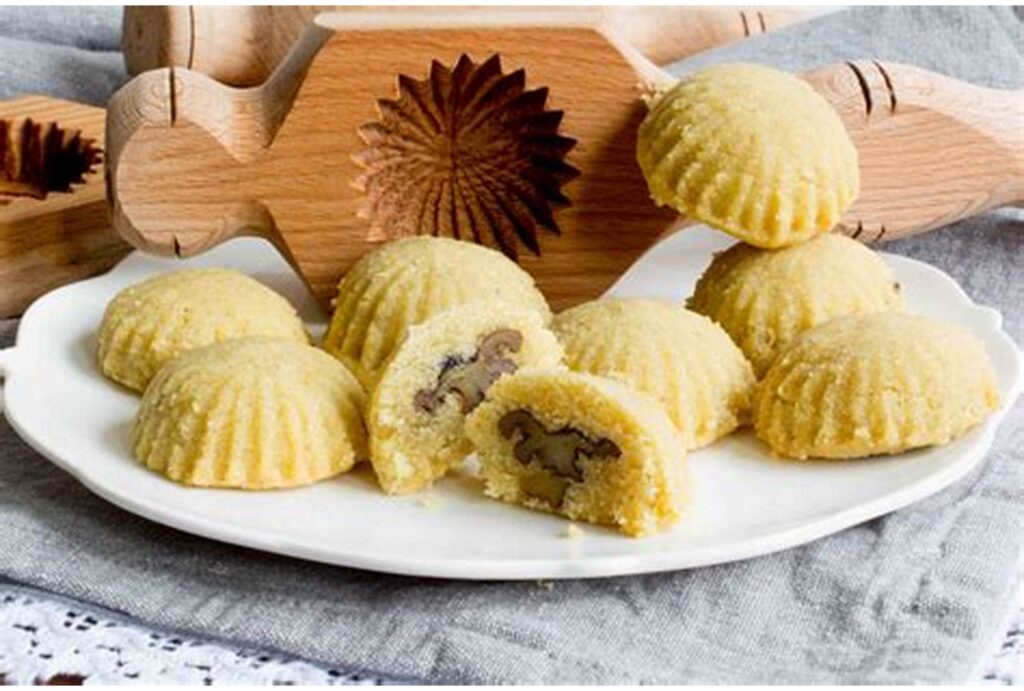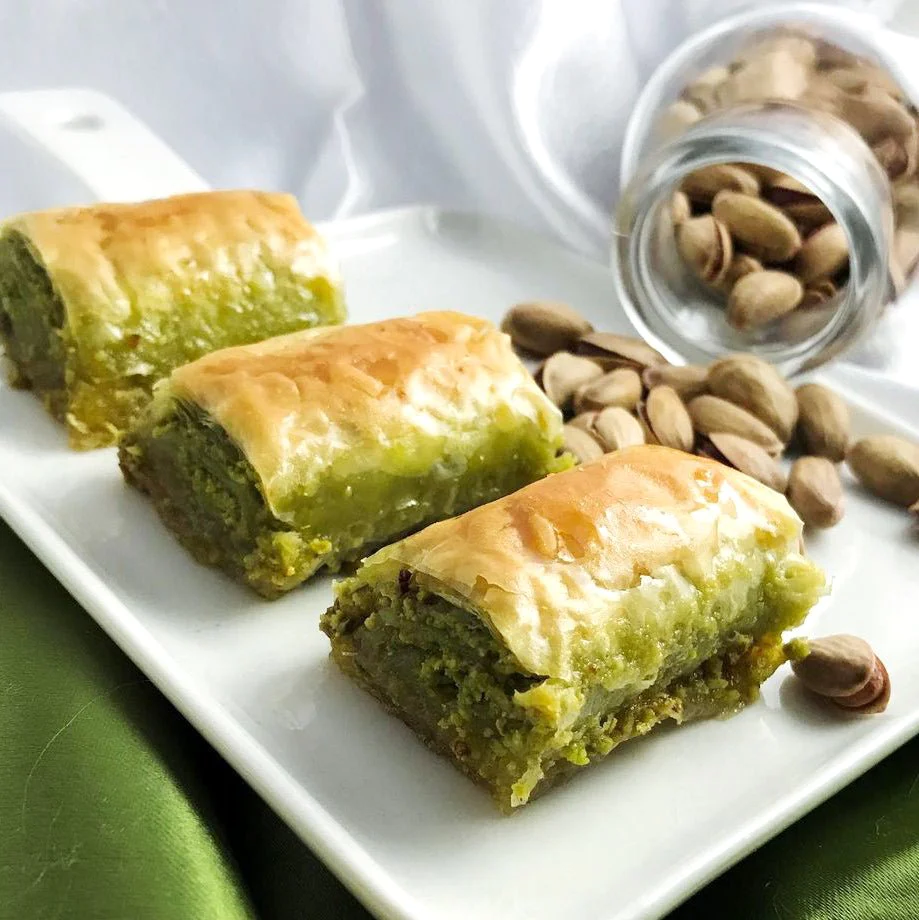

Baklava, also spelled as baklawa, is a popular dessert in many Middle Eastern and Mediterranean cultures. It is a sweet pastry made of layers of phyllo dough (thin sheets of unleavened dough) filled with chopped nuts, such as walnuts, pistachios, or almonds. The layers are then held together with syrup or honey, often flavored with spices like cinnamon or cardamom.
The phyllo dough is typically brushed with melted butter or oil between each layer, creating a crispy and flaky texture when baked. After baking, the baklava is usually cut into diamond or square shapes. It’s a rich and sweet treat enjoyed in various forms across different countries and regions, with slight variations in ingredients and preparation methods.




The history of baklawa is complex and spans several centuries, with variations of the sweet pastry found in different cultures throughout the Middle East, Balkans, and Eastern Mediterranean. While it is challenging to pinpoint the exact origins of baklava, it is widely agreed that its roots can be traced back to the Ottoman Empire.
One theory suggests that baklawa may have originated in the imperial kitchens of Topkapi Palace in Istanbul during the Ottoman period. The empire, which lasted from the late 13th century to the early 20th century, encompassed a vast and diverse region, bringing together various culinary traditions. Baklava likely evolved as a result of this cultural synthesis, combining elements from Central Asian, Middle Eastern, and Mediterranean cuisines.
The earliest known recipe for a dish resembling baklawa dates back to the 11th century in a Persian cookbook. However, the dish described in that recipe was not identical to the baklava we know today. Over time, the recipe underwent changes as it spread across the Ottoman Empire and neighboring regions.
Baklava gained popularity and became a symbol of festive occasions and celebrations. It was not only a delicious treat but also a reflection of the wealth and sophistication of the empire. As the Ottoman Empire expanded, so did the influence of baklava, and it became ingrained in the culinary traditions of the territories under Ottoman rule.
With the decline of the Ottoman Empire in the early 20th century, various countries in the region developed their own versions of baklava, incorporating local ingredients and flavors. Today, baklawa remains a beloved dessert, enjoyed not only in its region of origin but also worldwide, with each culture adding its own twist to the classic recipe.
know more https://abcocoanmore.com/index.php/chocolate/





AB COCOA & MORE has been dedicated to sharing its original taste and recipes consistently since the creation of the first Baklawa. The objective is to serve as a bridge connecting Tradition to Innovation, Apprenticeship to Craftsmanship, the Middle East to New Delhi, and New Delhi to the entirety of India.
HOME
OUR PRODUCTS
ABOUT US
CATRING SERVICES
OUR GIFTING
CONTACT US
